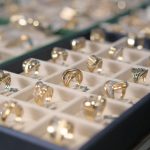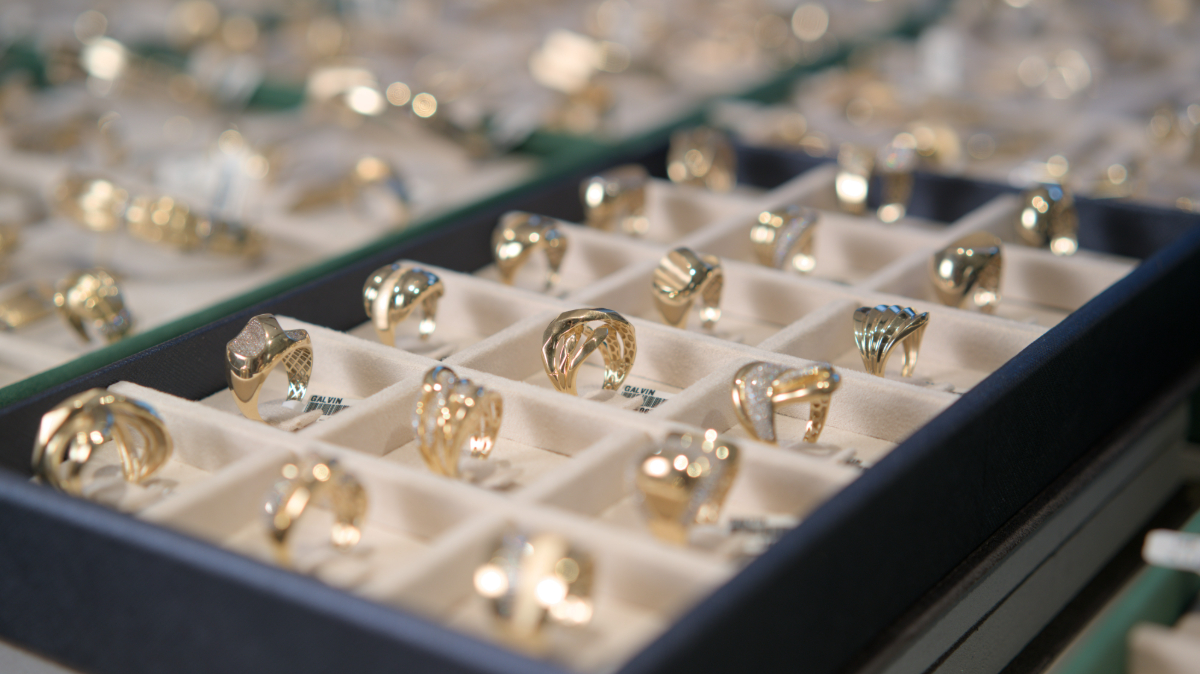Die cutting is an essential technique in the jewelry manufacturing industry, offering precision and efficiency in the creation of intricate designs and consistent shapes. This process is widely used to cut metals and other materials into specific forms using a hardened tool known as a die. Die cutting is particularly valuable for mass production, where repeatability and detail are crucial. In this article, we will explore what die cutting is, the different types of die cutting used in jewelry manufacturing, and the benefits it provides.
What is Die Cutting?
Die cutting is a manufacturing process that involves the use of a specialized tool, or die, to cut, shape, or engrave materials with precision. In jewelry manufacturing, die cutting is primarily used to create detailed and consistent metal components, such as pendants, charms, and decorative elements, from sheets of metal. The die is often made of hardened steel and is customized to create the desired shapes.
- Purpose: The primary purpose of die cutting in jewelry manufacturing is to ensure precision and uniformity in the creation of jewelry components. This process allows manufacturers to produce complex shapes efficiently, with a high level of detail.
- Standardization: Die cutting is highly standardized, ensuring that each component produced is identical. This level of consistency is especially important for jewelry pieces that need to be part of a matched set, such as earrings or bracelet links.
Types of Die Cutting in Jewelry Manufacturing
Flatbed Die Cutting:
- Overview: Flatbed die cutting is a process where a flat die is used to cut metal sheets on a flat surface. The die applies pressure to the metal, creating a clean cut along the desired shape. This method is ideal for producing simple and precise shapes.
- Applications: Flatbed die cutting is used for creating charms, pendants, and other flat jewelry elements. It is particularly useful for designs that require high precision and consistent thickness.
Rotary Die Cutting:
- Overview: Rotary die cutting involves using a cylindrical die that rotates to cut the metal. This method is efficient for producing intricate and repetitive patterns, and it works well with continuous rolls of metal.
- Applications: Rotary die cutting is often used for making chain links and decorative bands. It allows for high-speed production, making it suitable for large-scale manufacturing of jewelry components.
Laser-Assisted Die Cutting:
- Overview: In some cases, laser technology is integrated with die cutting to achieve even greater precision and flexibility. Laser-assisted die cutting provides the ability to make complex cuts that may be difficult to achieve with traditional dies.
- Applications: Laser-assisted die cutting is used for intricate designs that require very fine details, such as filigree work or customized inscriptions on metal surfaces.
Importance of Die Cutting in Jewelry Manufacturing
- Precision and Consistency: Die cutting provides an unparalleled level of precision and consistency, which is crucial in jewelry manufacturing. This ensures that each piece of jewelry is identical, which is especially important for producing matched sets or bulk orders.
- Efficiency in Mass Production: Die cutting is an efficient method for producing large quantities of jewelry components. It allows manufacturers to produce hundreds or even thousands of identical pieces quickly, reducing labor costs and ensuring uniformity.
- Versatility: Die cutting can be used on a variety of metals and materials, including gold, silver, platinum, and non-metal materials like leather or synthetic sheets. This versatility allows for a wide range of creative possibilities in jewelry design.
Practical Considerations for Die Cutting
- Tooling Costs: The initial cost of creating a die can be high, especially for complex designs. However, the investment is often justified for large production runs, as the die can be used repeatedly to produce consistent results.
- Material Limitations: Die cutting works best with sheet materials of a consistent thickness. It may not be suitable for thicker or irregularly shaped materials, which may require different methods such as casting or hand engraving.
- Maintenance and Durability: The die must be properly maintained to ensure consistent cuts over time. Hardened steel dies are used to withstand repeated use, but they may require sharpening or replacement after extensive production runs.
Die Cutting in Jewelry Manufacturing Process
The die cutting process begins with designing the die, which is customized based on the shape and details of the jewelry component to be produced. The die is then manufactured from hardened steel to ensure durability and precision. Once the die is ready, sheets of metal are placed on the die cutting machine, and pressure is applied to cut out the desired shapes.
Depending on the complexity of the design, flatbed, rotary, or laser-assisted die cutting methods may be used. After the components are cut, they are often polished, finished, or further processed to create the final jewelry piece. The consistency of die cutting makes it particularly well-suited for producing elements that need to match precisely, such as chain links or identical pendants.
Conclusion
Die cutting is a fundamental process in jewelry manufacturing that offers precision, efficiency, and consistency in the production of intricate components. By using techniques such as flatbed, rotary, and laser-assisted die cutting, manufacturers can produce high-quality jewelry pieces with a high level of detail and uniformity. Whether used for creating charms, pendants, or decorative bands, die cutting plays an important role in achieving both the aesthetic and practical goals of jewelry design. Understanding the different types of die cutting and their applications allows manufacturers to optimize their processes, reduce costs, and deliver beautiful and consistent jewelry to consumers.



